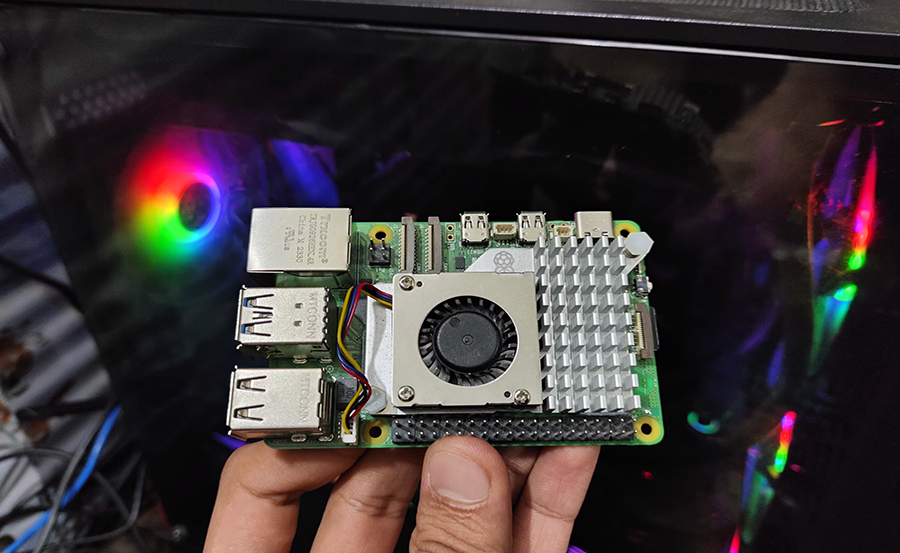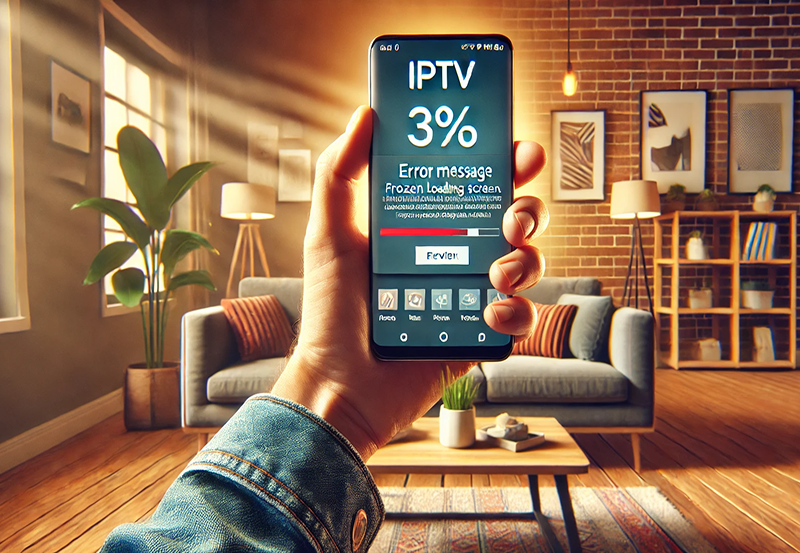Have you ever considered the numerous possibilities that open up when you host your own personal web server? With the proliferation of clouds and online hosting services, one might wonder why bother setting up a home server. Yet, there’s an undeniable charm and control in hosting your own. Not only does it offer you a playground for learning how websites tick behind the curtains, but it also furnishes a practical solution for privacy-conscious individuals who want more control over their data.
However, the thought of setting up a server might seem daunting initially. That’s where Raspberry Pi comes into play. It’s affordable, versatile, and perfect for small-scale projects like this. In the following sections, we will discuss the step-by-step process to get your Raspberry Pi server up and running, with tips on maximizing your streaming delight by potentially integrating IPTV services and more.
Why Raspberry Pi?
Cost-Effectiveness and Accessibility
Raspberry Pi is known for its affordability and ease of access. For those looking to experiment without a significant initial investment, this tiny computer is ideal. Available at most electronics retailers, it typically costs less than a dinner for two at a decent restaurant. Plus, the community support and range of tutorials available make it a great tool for beginners and tinkerers alike.
Expert Advice:
Get access to thousands of channels worldwide with XtremeHD IPTV, designed for sports lovers and movie enthusiasts.
This cost-effectiveness opens the door for anyone interested in learning about networking and server management without needing to commit to an expensive setup or ongoing subscription costs associated with online hosting services.
Scalability and Versatility
The Raspberry Pi is not just a toy; it’s a capable piece of hardware that can handle different software packages depending on your needs. As you learn and grow more comfortable with server management, you can challenge yourself further by trying more complex setups or integrating additional functionalities, evolving with your skills and interests.
While initially set up as a personal web server, your Raspberry Pi can accommodate various tasks, from running home automation systems to acting as a media server. This scalability ensures what you start today could expand into a more significant part of your tech ecosystem.
Setting Up Your Raspberry Pi Web Server
Gathering Necessary Equipment and Tools
To start, you’ll need a few essential items. Don’t worry; most of these are readily accessible or might already be part of your gadget drawer.
- Raspberry Pi (preferably the latest model)
- MicroSD card (at least 8GB, though bigger is better!)
- Micro USB power supply
- Ethernet cable (unless you’re using Wi-Fi)
- Monitor and keyboard for initial setup
- Internet connection
Once the list is complete, you can start the initial setup. Remember, even though Raspberry Pi is user-friendly, patience during the setup process is your best friend.
Installing the Operating System
The first real step in your journey is installing an operating system. To keep things simple and efficient, we recommend starting with Raspberry Pi OS, which is tailor-made for this little device.
- Download the official Raspberry Pi Imager from their site.
- Use the Imager to write the OS onto your MicroSD card.
- Insert the SD card into the Raspberry Pi and boot it up.
Follow the on-screen instructions to complete the setup. It’s usually a straightforward process, but it’s always good to double-check each step to ensure everything is functioning as expected.
Configuring Your Web Server
With the operating system set, it’s time to transform your Raspberry Pi into a functioning web server. At this stage, installing a web server software package is crucial, with Apache being one of the most popular choices due to its widespread use and robust community support.
- Open the terminal and type:
sudo apt update - Install Apache using:
sudo apt install apache2 -y - Verify installation by typing your Pi’s IP address into a web browser; you should see the Apache default page.
It’s a complex dance of commands, yet these steps bring your server to life. Testing it through different browsers may help in identifying any initial misconfigurations or issues.
Enhancing Your Server with Additional Features
Setting Up FTP Access
Now, while it’s already thrilling to host content, managing that content remotely brings the real freedom. Setting up FTP allows you to upload files without needing to physically access the device. Enter vsftpd, a lightweight FTP server solution, perfect for Raspberry Pi.
- Install vsftpd by typing:
sudo apt install vsftpd - Configure file permissions and user access in the
/etc/vsftpd.conffile. - Test the connection using an FTP client.
Getting into the nuances of file permissions can seem overwhelming initially, but soon managing your server’s contents from anywhere will become second nature.
Adding a Personal Touch with a CMS
Why stop at plain HTML pages when a content management system (CMS) could make managing your web server a breeze? WordPress is popular, offering themes and plug-ins that will get your site looking professional in no time. Its ease of use makes it an excellent match for our Raspberry Pi project.
To install WordPress, ensure your server supports PHP and MySQL since WordPress relies on these technologies. You might need to do a bit more digging into LAMP stacks, but it’ll be an educational dive into web server capabilities. Just take it one step at a time, and you’ll find yourself more knowledgeable and self-sufficient.
Securing Your Web Server
Implementing Basic Security Measures
Security is paramount when setting up a web server. Even during small-scale projects, maintaining proper security protocols helps protect against unauthorized access.
Some basic steps to reinforce your server might include:
- Regularly updating your software packages
- Configuring firewalls using iptables
- Disabling remote root logins and using SSH key authentication
Approached methodically, each action contributes to a robust defense against potential threats, ensuring your web server remains a safe haven for your data.
Tweaking Advanced Security Settings
For the more security-oriented folks, delving into SSL certificates and configuring HTTPS access adds an extra layer of encryption and protection. It’s these finer details that indicate your commitment to running a reputable and secure web server.
Acquiring SSL certificates might seem cumbersome, and while instructions vary depending on the chosen CA (Certificate Authority), tools like Let’s Encrypt simplify the process considerably. Such implementations not only improve your server’s security but also lend credibility to any public-facing sites you may deploy.
Integrating IPTV and Streaming Features
Exploring IPTV Service for Firestick
Integrating an IPTV service for Firestick into your home server network can enhance your streaming experience immensely. It’s not just about watching TV; this integration maximizes your streaming delight by transforming any Raspberry Pi into a multi-purpose entertainment hub.
Here’s a rough guide:
- Ensure your Raspberry Pi meets the necessary specifications for streaming.
- Install IPTV software compatible with your setup.
- Connect with IPTV subscription plans that suit your viewing preferences.
- Set up a secure connection between your server and Firestick.
By understanding and tackling all these stages, you’ll create a seamless experience that rivals any mainstream streaming service, but with your bespoke touch.
Benefit from IPTV Subscription Plans
Typically, IPTV subscription plans offer varied packages, allowing you to tailor the experience as per your habits. Analyzing what you watch can help select a plan suiting your needs, thereby optimizing your server’s performance and content delivery.
Since the interplay between the Raspberry Pi and IPTV has complexities, staying abreast with IPTV market trends is wise. Leveraging forums and support groups can enrich your knowledge pool and enhance how you utilize both technologies.
Quirks & Extended Use Cases
Embracing the Human Element
Technology is not foolproof, and neither are humans. When working with a Raspberry Pi, you might occasionally scrape your head over failed installations or finicky configurations. Yet, these hiccups provide far more valuable learning experiences than textbook scenarios ever could. Each solved problem makes you a better troubleshooter, a skill vital not only with Raspberry Pi but throughout the tech landscape.
Patience and perseverance are key allies in this journey. Allow yourself to acknowledge mistakes and learn from them—it’s these imperfect moments that carve a truly personalized tech venture.
Thinking Beyond Web Hosting
Much like how birds sing beyond their cage, considering broader use cases can unlock unprecedented horizons for your Raspberry Pi. Whether exploring home automation, experimenting with IoT, or delving into a professional presentation system, the options are virtually limitless.
By creatively integrating technologies and considering niche applications, you can shape your Raspberry Pi into a tool that not only meets immediate needs but tempts you with futuristic visions of what’s achievable.
FAQs: Your Questions Answered

What are the basic steps to set up a personal web server on Raspberry Pi?
The basic steps involve gathering necessary hardware, installing an OS like Raspberry Pi OS, setting up Apache or another web server software, and configuring your security settings. Consider adding FTP access and CMS for greater control and user-friendliness.
How can I maximize my streaming experience with IPTV on Raspberry Pi?
Maximize your experience by ensuring your Pi meets the specifications for streaming and setting up a suitable IPTV software. Carefully select IPTV subscription plans that align with your streaming preferences for an optimized experience.
Is a Raspberry Pi web server secure enough for personal use?
While Raspberry Pi can support secure configurations, ensuring regular updates, proper firewall settings, and utilizing SSL certificates can help maintain a robust security level. Always remain vigilant and adjust your settings as necessary to ensure optimal security.
What challenges might arise while setting up a web server on Raspberry Pi?
Common challenges include hardware compatibility issues, software installation errors, and complex network configurations. Each challenge offers a learning opportunity, and online forums can be invaluable resources for troubleshooting and community support.
Can Raspberry Pi support multi-user environments for hosting?
Raspberry Pi can handle light multi-user environments with capability adjustments and proper configuration, although larger multi-user setups may demand more robust hardware to maintain performance and reliability.
Plex IPTV Errors: 5 Technical Issues You Need to Know About





